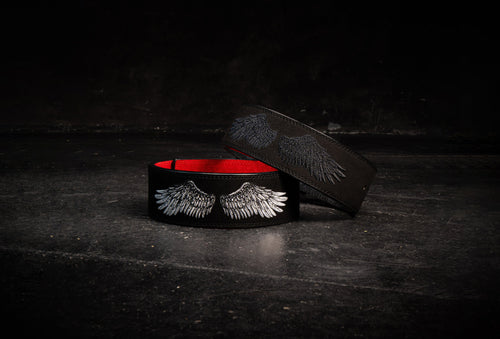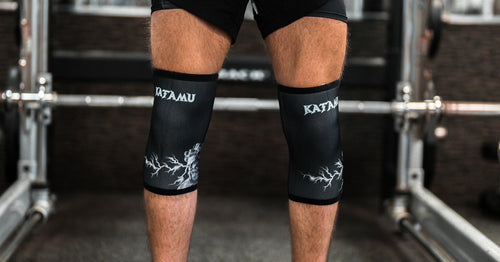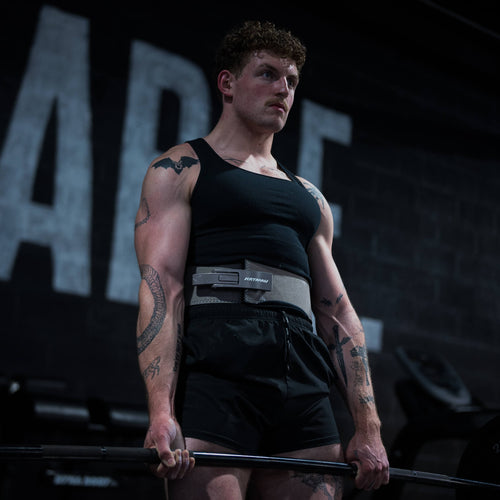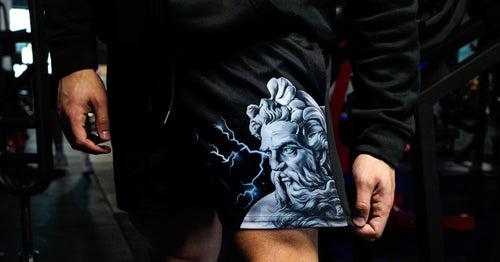2025 is shaping up to be a big year for new lifters, with more people than ever starting strength training and searching for the right gear. The gym belt lever stands out as a must-have for those looking to boost lifting performance and prevent injuries.
Learning to use a gym belt lever properly can make a huge difference. It helps you progress faster, avoid common injuries, and step into the gym with more confidence.
This guide is here to help beginners understand everything about lever belts. You’ll learn what makes them unique, how to pick the right one, how to use and care for it, plus expert tips tailored for 2025. Get ready to master the essentials and take your training to the next level.
Understanding Gym Belt Levers: What Beginners Need to Know
Starting strength training in 2025? You have probably seen people in the gym using a gym belt lever and wondered what makes it so popular among beginners and experienced lifters alike. Understanding this essential piece of gear is key to maximizing your results and safety in the gym.

What is a Lever Belt and How Does It Work?
A gym belt lever is a specialized lifting belt designed with a unique buckle mechanism that allows for rapid, consistent tightening around your midsection. Unlike traditional prong or Velcro belts, the lever system lets you lock in the exact level of tightness you want every time with just a quick snap. This feature makes the gym belt lever especially user-friendly for beginners, as it removes the hassle of adjusting multiple holes or worrying about uneven pressure.
The main purpose of a gym belt lever is to stabilize your core during heavy lifts. By increasing intra-abdominal pressure, the belt helps protect your spine and maintain proper form. Most gym belt levers are constructed from durable materials like full-grain leather or suede, available in common thicknesses of 10mm and 13mm. The lever buckle is typically made from heavy-duty steel for long-lasting reliability.
If you compare a gym belt lever to a prong belt, you will notice the lever offers faster setup and more consistent tightness for every session. This consistency is a big reason why lever belts are gaining popularity. In fact, recent data shows lever belts have become the go-to choice for over 60 percent of powerlifters and are now a staple for recreational lifters as well. For a more detailed breakdown, check out this Lever Lifting Belt Guide that covers the mechanics and advantages in depth.
Key Benefits of Lever Belts for Beginners
For those just starting out, a gym belt lever offers several important advantages. First, it provides enhanced support during compound lifts like squats, deadlifts, and bench presses. The lever mechanism ensures you can tighten the belt quickly and to the same degree every time, so you do not have to second-guess your setup.
Another major benefit is the boost in lifting confidence. Knowing your core is supported by a gym belt lever helps you focus on your form and push your limits safely. Many beginners report faster progress in strength and technique after making the switch to a lever belt. For example, a recent survey found that new lifters who used a gym belt lever saw a 20 percent reduction in minor lifting injuries during their first year.
Here are some key benefits:
- Fast, consistent tightening for every lift
- Better core stabilization and posture
- Reduced risk of injury during heavy lifts
- Increased confidence and motivation
Testimonials from beginners often highlight how a gym belt lever made them feel more secure and helped them learn proper bracing techniques from day one. With the right support, you can focus on building strength, not worrying about your safety.
Common Myths and Facts About Lever Belts
There are some widespread myths about the gym belt lever, especially among those new to lifting. One common misconception is that lever belts are only for advanced lifters or competitive powerlifters. In reality, a gym belt lever is designed to help anyone who wants to protect their core and lift safely, no matter their experience level.
Another myth is that wearing a gym belt lever will weaken your core over time. The truth is, proper use of a gym belt lever can actually enhance core activation by teaching you how to brace effectively. Using the belt as a tool, not a crutch, is the key to building a strong and resilient midsection.
Here are some facts you should know:
- Myth: Only advanced lifters need a gym belt lever.
- Myth: Belts make your core weaker.
- Fact: Correct use boosts core engagement and safety.
- Fact: A gym belt lever is best used for heavy compound lifts, not every exercise.
The most effective way to use a gym belt lever is to incorporate it into your routine for lifts that demand maximum stability, while also training beltless for lighter sets and accessory movements. This balanced approach will help you get the most out of your training and keep your core strong.
Choosing the Right Lever Belt in 2025
Choosing the right gym belt lever in 2025 can make or break your lifting journey as a beginner. With so many options, it’s easy to feel overwhelmed. The right belt gives you confidence, safety, and progress, so let’s break down what matters most.

Key Features to Look For
When shopping for a gym belt lever, start by checking the material. Full-grain leather and suede are known for durability and support, while synthetic belts are less common among serious lifters. Thickness matters too: 10mm belts are flexible and ideal for most beginners, while 13mm models offer extra support but may be stiff at first.
Width is another factor. Most belts are 4 inches wide, the standard for powerlifting, but specialty sizes exist for different body types. Pay attention to the lever mechanism, which should feel solid and easy to adjust. Single-prong levers are simple, while some brands offer double-prong for added security. Stitching and edge finish can affect comfort, so look for smooth, reinforced seams.
Here's a quick comparison:
| Feature | 10mm Belt | 13mm Belt | Prong Belt | Gym Belt Lever |
|---|---|---|---|---|
| Flexibility | High | Low | Medium | Medium |
| Support Level | Moderate | Maximum | Moderate | High |
| Ease of Use | Easy | Medium | Slower | Fastest |
| Consistent Tightness | Good | Best | Variable | Best |
Want a deep dive? Check out Choosing the Best Lifting Belt for more detailed comparisons.
Sizing and Fit: Getting It Right
A properly fitted gym belt lever is crucial for comfort and performance. To find your size, measure around your torso at your navel, not your hips or pant line. Use a soft tape measure and keep the tape snug, not tight.
Each brand’s sizing chart can vary, so always double-check before ordering. Most charts will list ranges in inches or centimeters. Aim for a fit where the belt closes at the middle holes, giving you room to adjust as your body changes.
Typical steps for sizing:
- Measure at the navel, standing relaxed.
- Compare your measurement to the brand’s chart.
- Choose a size that puts you in the middle of the range.
- Try the belt on and check for a snug, secure feel.
A gym belt lever should feel supportive but not restrictive. You should be able to brace your core and breathe deeply when the belt is fastened.
Budget and Value Considerations
Gym belt lever prices in 2025 range widely, so it’s smart to match your budget with your needs. Entry-level belts start around $50, usually made from basic leather or synthetic materials. Mid-range options ($80–$120) offer higher-quality leather, better stitching, and longer warranties. Premium belts ($150+) feature top-grade materials, custom levers, and extra comfort features.
Here’s what you can expect at each price point:
- Entry-Level: Basic support, limited sizing, shorter lifespan.
- Mid-Range: Durable leather, quality lever, good warranty, better comfort.
- Premium: Custom sizing, reinforced stitching, lifetime warranty, extras like free wrist wraps.
Investing in a higher-quality gym belt lever pays off in the long run. Data shows premium belts last up to 7 years with care, while cheaper belts may wear out in 1–2 years. Always weigh the upfront cost against durability and support.
Katamu Co: Premium Lever Belts for Beginners
Katamu Co stands out as a trusted provider of premium gym belt lever options, designed with beginners in mind. Their belts feature original designs, high-quality leather, and a wide range of sizes for every lifter. The lever mechanism is beginner-friendly, making adjustments simple and quick.
Over 50,000 lifters have chosen Katamu for their first gym belt lever. Customer reviews highlight the comfort, durability, and stylish look. Katamu also offers a robust warranty and extras like free wrist wraps with select belts, adding real value for new lifters.
If you want a gym belt lever that lasts, looks great, and supports your progress, Katamu Co is a top choice for 2025. Their focus on quality and customer satisfaction makes them an ideal starting point for any beginner.
Step-by-Step Guide: How to Use a Lever Belt Safely
Getting the most out of your gym belt lever starts with proper setup and technique. Whether you’re brand new or just upgrading your gear, following these steps will help you maximize safety, performance, and comfort.
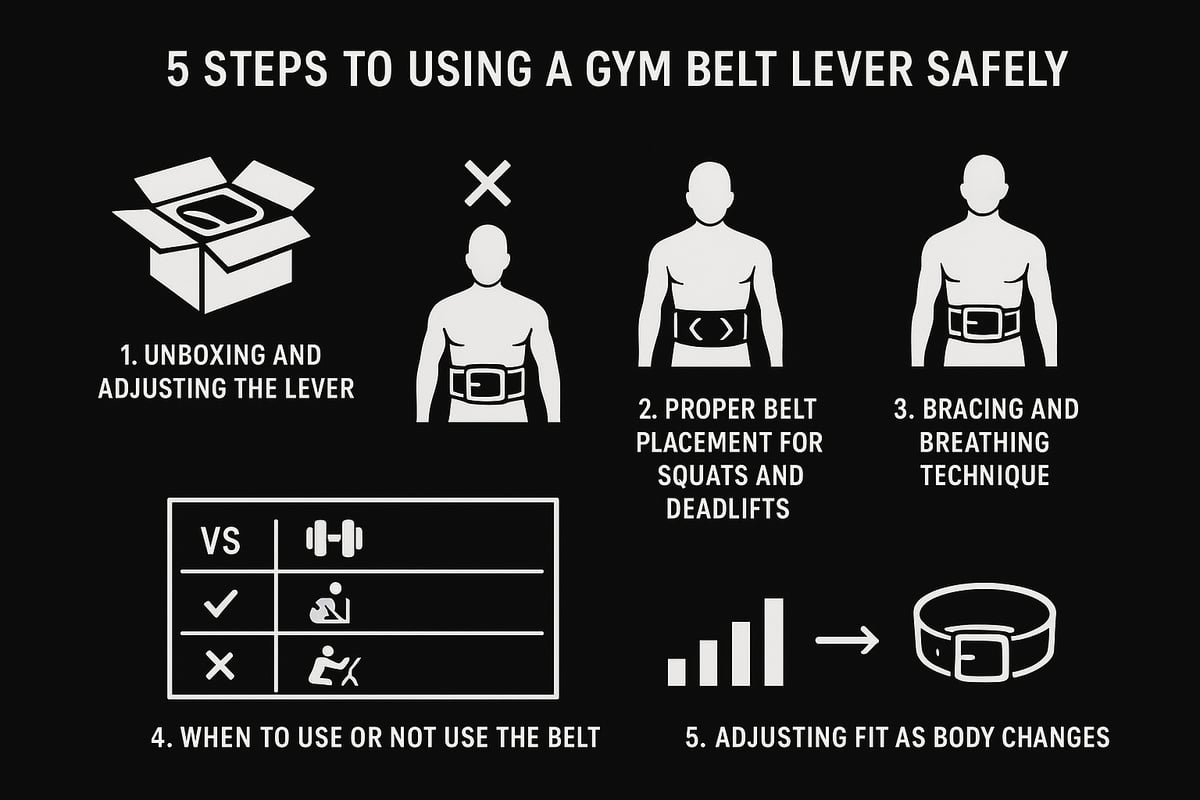
Step 1: Setting Up the Lever Belt for First Use
Unboxing your new gym belt lever is exciting, but don’t rush the setup. Start by inspecting the belt for any visible defects, like loose stitching or faulty buckles. This ensures your gear is safe from day one.
Next, adjust the lever mechanism to fit your waist. Most gym belt lever models come with pre-punched holes, but you’ll need a screwdriver to move the lever to the right spot. Place the belt around your waist at the height where you plan to wear it, mark the most comfortable hole, then attach the lever securely.
If you’re unsure which belt to choose, explore the Lever Belts Collection for a variety of beginner-friendly options. These offer clear sizing guides and quality materials.
Troubleshooting tip: If the belt feels too tight or loose, adjust the lever by one hole at a time until you achieve a snug, but not restrictive, fit. Double-check all screws are tight before your first workout.
A proper setup is the foundation for safe lifting and supports your journey with the gym belt lever.
Step 2: Wearing the Belt Correctly
Placement is key to maximizing the benefits of your gym belt lever. For most lifts, position the belt around your midsection just above your navel. This allows the belt to support your core without digging into your ribs or hips.
For squats, the belt should sit a bit higher, while for deadlifts, a slightly lower placement works best. Always keep the belt level and parallel to the floor for even pressure.
To secure the gym belt lever, pull the belt tight around your waist and snap the lever closed. You should feel firm support, but still be able to take a deep breath.
Common mistakes include wearing the belt too high, too low, or letting it rotate during lifts. If you feel discomfort or pinching, adjust the placement and tightness before lifting.
Taking the time to wear your gym belt lever correctly ensures both safety and optimal performance in every session.
Step 3: Bracing and Breathing Techniques
Proper bracing is what transforms your gym belt lever from a simple accessory into a powerful lifting tool. Start by taking a deep breath into your belly, not your chest, before initiating a lift.
With the gym belt lever in place, expand your core outward against the belt, creating intra-abdominal pressure. This pressure acts like an internal weightlifting shield, stabilizing your spine and boosting your strength.
Use the Valsalva maneuver: inhale deeply, brace your core, and hold your breath as you initiate the lift. Exhale only after passing the most challenging part of the movement.
Beginners often forget to brace properly, relying only on the belt. Practicing this technique, with the gym belt lever, can lead to noticeable improvements in stability and lifting numbers.
Before and after comparisons often show better posture, fewer wobbles, and increased confidence when bracing is done right.
Step 4: When and When Not to Use a Lever Belt
Knowing when to use your gym belt lever is crucial for progress and injury prevention. Reserve the belt for compound lifts like squats, deadlifts, and heavy presses where your core needs maximum support.
During warmups, lighter sets, or isolation exercises, train without the gym belt lever. This helps your core muscles develop naturally and prevents over-reliance.
A sample beginner program might include using the belt only for work sets above 75 percent of your max weight. This balance encourages strength gains and core activation.
If you’re unsure, ask a coach or follow trusted guidelines for belt use frequency. The key is to use your gym belt lever as a supportive tool, not a crutch.
Step 5: Adjusting and Re-adjusting for Progress
As your body changes, so should your gym belt lever settings. Losing fat or gaining muscle can affect how your belt fits, so check the tightness regularly.
Signs you need to re-adjust include the belt feeling loose during lifts, difficulty closing the lever, or visible gaps. To adjust, move the lever one hole tighter or looser and test the fit.
If the belt becomes uncomfortable or shows signs of wear, inspect the lever, screws, and leather. Replace worn parts promptly to maintain safety.
Many lifters share stories of their first gym belt lever lasting years with proper care and timely adjustments. Staying proactive ensures your belt continues to help you lift safely and confidently.
Common Mistakes Beginners Make with Lever Belts (and How to Avoid Them)
Starting out with a gym belt lever can feel like unlocking a whole new level in your training journey. But even with the best gear, beginners often run into avoidable mistakes that limit results, cause discomfort, or even increase injury risk. Let’s break down the most common pitfalls and how to sidestep them for a safer, more effective lifting experience.

Mistake 1: Wearing the Belt Too High or Too Low
Proper placement of your gym belt lever is crucial. Many beginners fasten the belt above the ribcage or too far down near the hips. This misplacement reduces support and can restrict breathing.
A well-fitted gym belt lever should sit around the midsection, just above the hip bones. This lets you brace your core against the belt, maximizing stability. Test placement in front of a mirror, and adjust as needed for each lift.
Mistake 2: Overtightening or Leaving the Belt Too Loose
It’s tempting to crank your gym belt lever as tight as possible, thinking tighter means safer. In reality, overtightening can restrict breathing and limit core engagement, while a loose belt offers little support.
A properly tightened gym belt lever allows you to take a deep belly breath and push out against the belt. You should feel snugness without pain or pinching. If you struggle to breathe or the belt shifts, readjust before your next set.
Mistake 3: Using the Belt for Every Exercise
Some new lifters wear a gym belt lever for every movement, from warmups to curls. This overuse can hinder natural core development and diminish the belt’s benefits.
Reserve your gym belt lever for heavy compound lifts—think squats, deadlifts, and overhead presses. Use it when you’re working at 80% or more of your max effort. Training beltless on lighter sets helps keep your core strong.
Mistake 4: Neglecting Proper Bracing—Relying Solely on the Belt
A gym belt lever is not a substitute for proper technique. Relying only on the belt without learning how to brace your core can leave you vulnerable to injury.
Focus on taking a big breath into your belly and actively pushing out against the belt before each rep. This bracing creates intra-abdominal pressure, supporting your spine and improving performance. Studies show that correct use of lever belts can help lifters add 5–15% to their max, thanks to better pressure and core stability (Lever belts enhance lifting performance).
Mistake 5: Ignoring Discomfort or Pain
If your gym belt lever causes pain, pinching, or bruising, don’t tough it out. Discomfort signals poor fit, improper adjustment, or even a defect.
Check that the belt’s width and thickness match your body type, and ensure the lever is set to the right hole. Always inspect for wear or sharp edges before use. If pain persists, consult a coach or consider a different belt size.
Quick Reference Table: Common Mistakes and Solutions
| Mistake | Effect | Solution |
|---|---|---|
| Belt too high/low | Poor support, breathing issue | Position at midsection above hips |
| Overtightening/too loose | Discomfort, weak support | Tighten so you can brace and breathe |
| Using belt for every exercise | Weak core, dependence | Use for heavy compound lifts only |
| Neglecting bracing | Injury risk, less stability | Learn and practice proper bracing |
| Ignoring discomfort/pain | Injury, reduced performance | Adjust fit, check for defects, seek help |
Real-world surveys highlight that over 60% of new lifters report at least one of these mistakes in their first month. By staying mindful and practicing proper technique, you’ll get the most out of your gym belt lever while staying safe and confident in your lifts.
Lever Belt Maintenance and Longevity Tips
Keeping your gym belt lever in top shape is essential for both safety and performance. A well-maintained belt not only lasts longer but also provides the support you need every session. Let’s break down how to care for your gym belt lever so it stays as strong as your lifts.
Cleaning and Basic Care
Regular cleaning keeps your gym belt lever looking sharp and functioning well. For leather or suede, use a dry or slightly damp cloth to wipe away sweat and chalk after each session. Avoid soaking the belt or using harsh chemicals, which can damage the material. For deeper cleaning, a gentle leather conditioner helps maintain suppleness.
If you want a step-by-step routine, check out this Proper care for lever belts guide for detailed cleaning, conditioning, and drying tips. Clean your gym belt lever every few weeks, especially if you train frequently.
- Wipe after each use
- Deep clean monthly
- Condition leather sparingly
Storage Best Practices
How you store your gym belt lever matters more than you might think. Always hang your belt in a dry, well-ventilated space. Keep it away from direct sunlight, heat sources, or damp areas to prevent cracking or mildew.
Never fold or roll your gym belt lever tightly. This can weaken the material and compromise its support. If you train at home, a simple hook or belt rack is ideal for storage.
- Hang, don’t fold
- Avoid moisture and heat
- Store in a cool, dark place
Inspecting for Wear and When to Replace
Regular inspection is crucial for your gym belt lever’s safety. Check the buckle and lever mechanism for signs of rust, bending, or looseness. Examine stitching and edges for fraying, and look for cracks or thinning in the leather.
If you notice the lever not locking securely, or if the belt feels less supportive, it may be time to replace the lever, screws, or even the whole gym belt lever. Don’t ignore small issues—address them early to avoid sudden failures during lifts.
- Check buckle and lever after each use
- Inspect stitching and edges monthly
- Replace parts at the first sign of failure
Maximizing Longevity: Real-World Lifespan and Pro Tips
With the right care, a gym belt lever can last 3 to 7 years, sometimes even longer. Well-maintained belts keep their shape and support, while neglected ones often crack, stretch, or fail within a year.
Here’s a quick comparison:
| Care Level | Average Lifespan | Support Retention |
|---|---|---|
| Regularly cleaned & stored | 5-7 years | Excellent |
| Occasionally cleaned | 2-4 years | Moderate |
| Neglected | 1-2 years | Poor |
To maximize the life of your gym belt lever, stick to a cleaning routine, store it properly, and inspect it often. This investment pays off in reliable performance and lasting value.
Pro Tips for Maximizing Performance with Your Lever Belt
Unlocking the full potential of your gym belt lever takes more than just strapping it on. With the right techniques, you can boost your performance, stay safer, and progress faster in 2025. Let’s dive into expert-level strategies, smart training integration, myth-busting insights, and community-driven motivation to make your gym belt lever journey a success.
Advanced Bracing and Technique Tweaks
Mastering advanced bracing with your gym belt lever is a game changer for heavy lifts. Start by positioning the belt at your core’s midpoint. Take a deep breath, expand your abdomen against the belt, and hold tight as you lift. This technique maximizes intra-abdominal pressure, giving your spine crucial support.
- Focus on a neutral spine during squats and deadlifts.
- Use the gym belt lever for consistent tightness, unlike prong or Velcro belts.
- Practice bracing with lighter weights before max attempts.
Pro lifters often recommend adjusting belt placement slightly for different lifts. For example, a higher position can help with squats, while a lower placement supports deadlifts. Studies show that using a gym belt lever can improve force output and stability.
Want to dig deeper into technique? Check out the Lever belt benefits in weightlifting to see how proper use of a gym belt lever can boost core stability and reduce injury risk.
Integrating Lever Belts Into Progressive Training
Introducing a gym belt lever into your training requires a smart approach. Start by using the belt on your heaviest sets—think 80 percent of your one-rep max or above. This builds confidence and allows your body to adapt to the gym belt lever’s unique support.
- Use the belt for main lifts like squats, deadlifts, and overhead presses.
- Avoid wearing it for every exercise. Beltless training builds raw core strength.
- Gradually increase belt usage as your lifts get heavier.
Here’s a sample 8-week progression plan:
| Week | Main Lifts with Belt | Accessory Lifts Beltless |
|---|---|---|
| 1-2 | Top set only | All |
| 3-4 | Top 2 sets | All |
| 5-6 | Last 3 sets | All |
| 7-8 | All working sets | All |
This approach helps you balance core training and lever belt benefits. Remember, your gym belt lever is a tool, not a crutch—let your core do the work on lighter sets.
Lever Belt Myths Busted by Experts
There are plenty of myths about the gym belt lever floating around the fitness community. Let’s set the record straight:
| Myth | Fact |
|---|---|
| Only advanced lifters need a belt | Beginners benefit from support and confidence |
| Belts weaken your core | Proper use enhances core activation |
| Use the belt for every exercise | Strategic use is best |
| One-size-fits-all for all lifts | Adjust belt placement for different movements |
Strength coaches and physiotherapists agree: When used correctly, a gym belt lever can actually help you train your core more safely. Research confirms that belts, when used as intended, lead to better performance and lower injury rates.
For a balanced perspective, explore the Pros and cons of lifting belts to understand both benefits and limits of the gym belt lever.
Community and Motivation
The gym belt lever isn’t just gear—it’s a badge of commitment within the lifting community. Sharing progress, tips, and stories online can keep you motivated and accountable. Social media groups for beginners are booming in 2025, with thousands posting their gym belt lever breakthroughs every week.
- Join online forums and follow hashtag trends like #LeverBeltSquad.
- Celebrate milestones—your first squat PR with a gym belt lever is a big win.
- Ask for feedback and advice from experienced lifters.
Being part of a supportive community makes the journey more enjoyable. Whether you’re lifting at home or in a commercial gym, the gym belt lever connects you with others who share your passion and drive.
Now that you know what to look for in a lever belt and how much it can boost your confidence and safety in the gym, you’re ready to take the next step. Whether you’re just getting started or want gear that keeps up as you progress, having a quality belt makes a real difference. At Katamu, you’ll find premium lever belts that fit well, last for years, and look great—plus you get peace of mind that you’re investing in your progress. Ready to build your setup and start lifting smarter?
Build your setup
